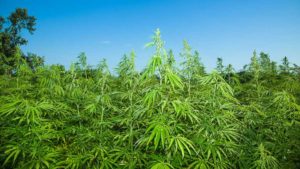All You Need to Know About New Hemp Regulations

Industrial hemp has many uses. Photo courtesy of the University of Kentucky College of Agriculture, Food & Environment
On Oct. 24, 2019, the USDA formally issued an interim final rule, establishing the USDA Domestic Hemp Production Program.
Recently, the USDA also held a webinar to help interested growers understand the various moving parts with the interim rules, which are effective as of Oct. 31 and will be in place for two years, allowing a full crop cycle before the agency issues the final rule.
According to the webinar, USDA is using 2020 as a “test drive” to decide whether the interim rule is strong enough or whether any final adjustments need to be incorporated into the final rule.
State and Tribal Plans Still Viable
USDAs’ interim rule provides guidance on some of the basic provisions states or tribal governments will need to have in place for USDA approval and compliance, including:
- Tracking of where hemp will be grown.
- Provisions for testing using post-decarboxylation or similarly reliable methods for testing THC levels.
- Disposal of non-compliant (0.3% THC or higher) or “hot” plants.
- Provisions spelling out what compliance looks like, and penalties and sanctions for violations, as well as standardized inspection procedures for all farms growing hemp.
- Information sharing procedures for producers.
- Must be able to prove state or tribe has resources to administer the program or plans.
Testing Procedures
The interim rule contains requirements for sampling hemp, the testing process that will determine whether a block or group of plants is compliant with the 0.3% THC content rule.
First off, sampling of plants must occur within 15 days prior to the harvest of an individual block, or group of plants of a similar variety or cultivar. This will be undertaken by a USDA-approved sampling agent or a federal, state, or local law enforcement official.
For more specific information on the testing procedures, USDA directs potential growers to do some research on the Agricultural Marketing Service (AMS) website.
Additionally, testing must be completed by a DEA registered lab, and any licensee may request retesting if they believe the original test found THC levels that were in error.
If the hemp tests at a result up to 0.5% THC, than the crop must be destroyed, although it will not be considered a negligent violation. Three negligent violations in a five year period would disqualify a producer from the program.
Step by Step
Many growers are simply wondering how to take the first steps towards getting a USDA (or state or tribal) license to produce hemp.
The first step, according to the USDA webinar, is to contact your local state department of agriculture or a tribal government to inquire whether a production plan is already in place. If the answer is yes, we have a plan in place, growers need to be licensed and authorized under that plan. Only if no plan exists and none is pending at the time of inquiry can a grower apply for the USDA hemp production license.
Another thing to keep in mind is that criminal convictions in your past can limit your ability to access these programs. If you’ve been convicted of a felony related to a controlled substance within the past decade, your application for a license will be denied. You will be required to submit a copy of your FBI criminal history summary as part of the application process.
After you’ve planted hemp, then you must visit your local USDA Farm Service Agency office to provide your USDA license number and the geospatial (coordinates) data on where you will be growing your crop.
What About USDA?
The webinar makes quite clear the expectations for prospective farmers in the coming days and weeks as we inch toward #Plant20. But, what will USDA be doing in the meantime to ensure this all goes smoothly Year One?
According to the webinar, over the next few months USDA will be focused on having AMS approved as many state and tribal plans as possible. And starting on November 30, the agency will begin reviewing producer applications from those individual producers in states and tribes that do not have a hemp production plan.
More information can always be found by visiting the USDA hemp production Program website, and growers with specific questions about the interim rules are asked to email [email protected].










